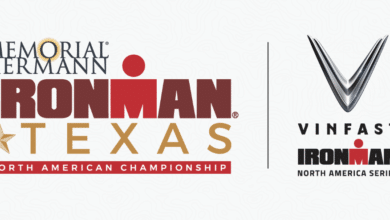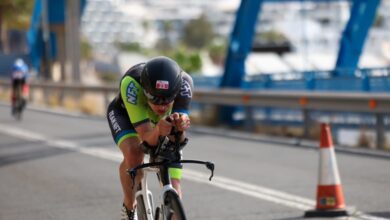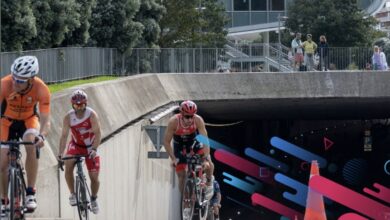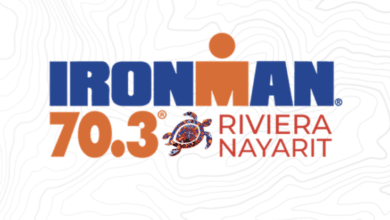How to correctly signal a bike rack in the car?
What is the current regulation and how should the load be signalled?
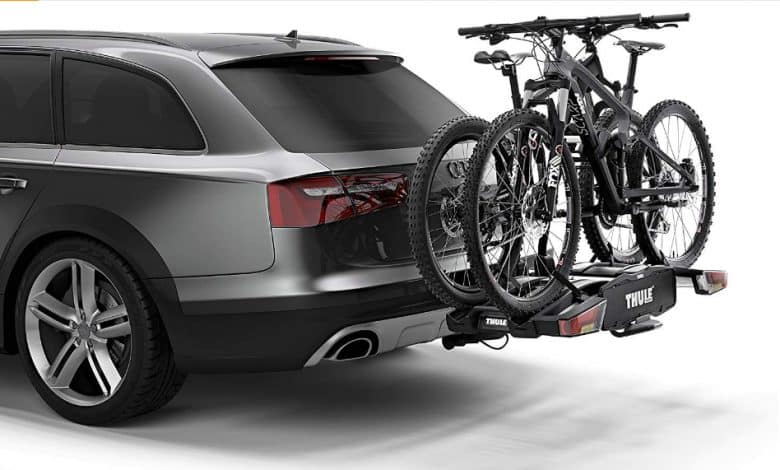
In Spain you have to know the current regulations well to carry a bicycle rack correctly.
Failure to comply may lead penalties of up to €200
Types of bike racks
There are several types, but the most important and to which the same regulations apply are those of the tailgate and ball.
Ceiling
In the case of bicycle racks that go on the roof, the Regulation tells us that the Maximum height allowed in total of the vehicle is 4 meters.
The number of bicycles that can be transported is up to 4, which must be very fastened
For this they have to use approved roof racks and bike racks
They must be very well secured with the bar's own approved fasteners.
tailgate
They are an alternative to roof racks but you have to take into account the regulations and the size of the load.
It is a comfortable way to transport them and cheaper than ball ones
Ball
This type of fastening It must be previously approved and with the permits in order.
To be able to carry the bicycles, the bike racks usually have an integrated number plate and set of lights.
Van
In the case of wanting to transport bicycles in a van, the Legislation is the same as in vehicles.
Regulations for the use of bicycle racks in Spain
Keep in mind that the load cannot protrude more than 15% of the length of the vehicle if it is indivisible or 10% if it is.
It is also mandatory that headlights and vehicle license plate are perfectly visible from all angles
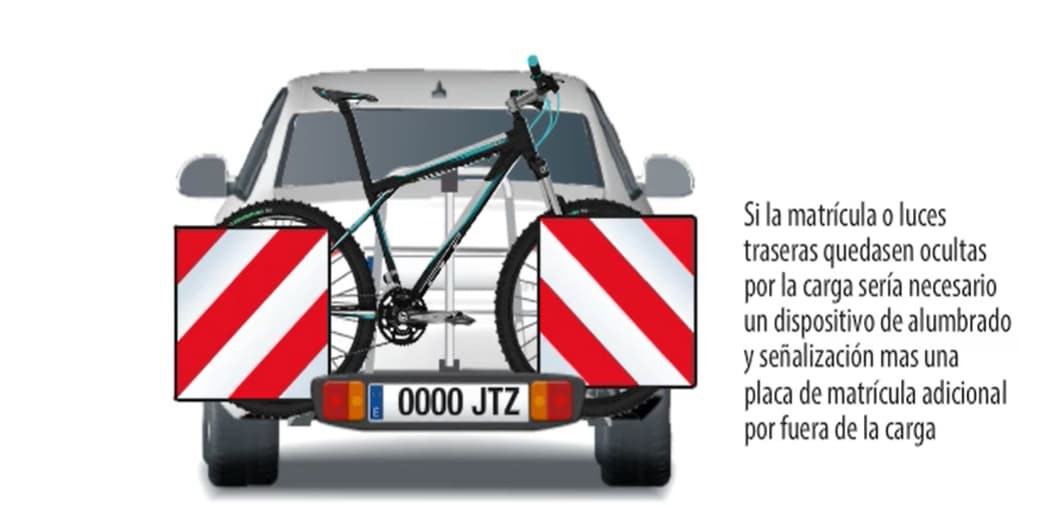
You must carry a V20-type sign, since any load that protrudes from the vehicle must be marked
What are V20 signals?
They are signals that warn other drivers that the load they carry exceeds the length of the vehicle.
It is a square panel (50X50) with alternating diagonal stripes of white and red.
When to use the V20 signal?
There are 3 different situations in which they must be used, taking as a reference the size of the vehicle and the mirrors
If the load does not protrude laterally
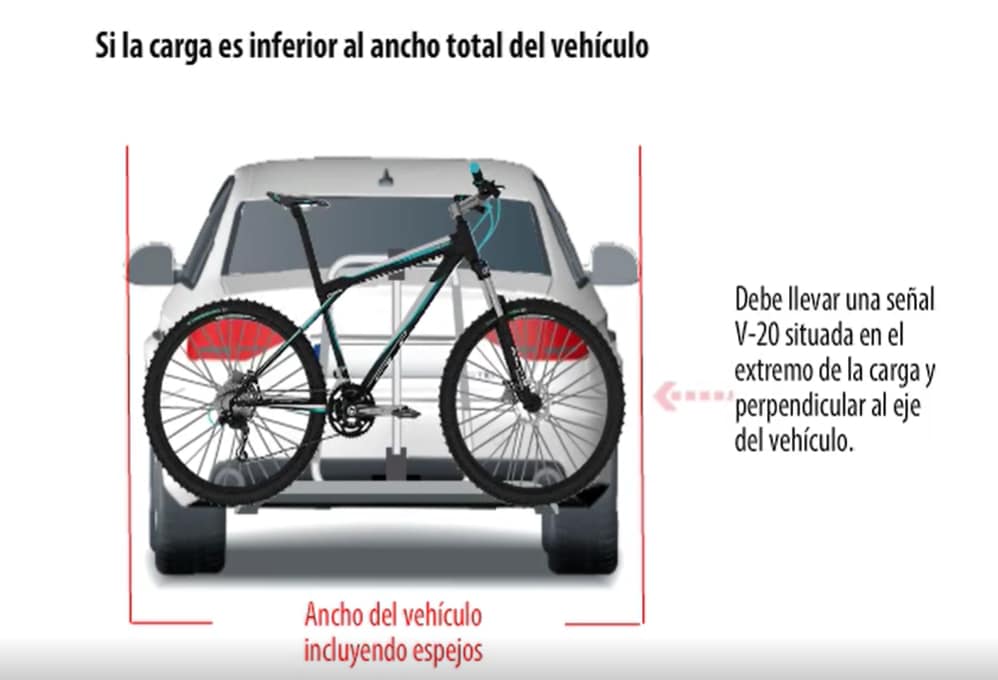
In this case, the mirrors do not count, they would have to be signaled with an approved V20 signal.
If the load protrudes from the body of the car but not from the mirrors
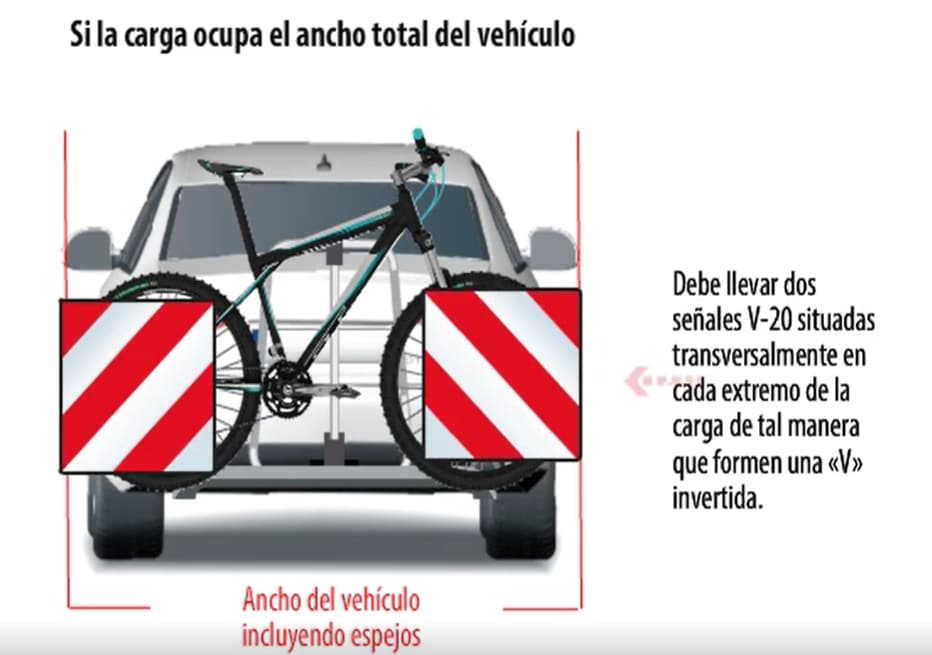
In this case, 2 approved V20 plates must be used on the sides of the load in an inverted V shape.
If the load protrudes beyond the width of the mirrors
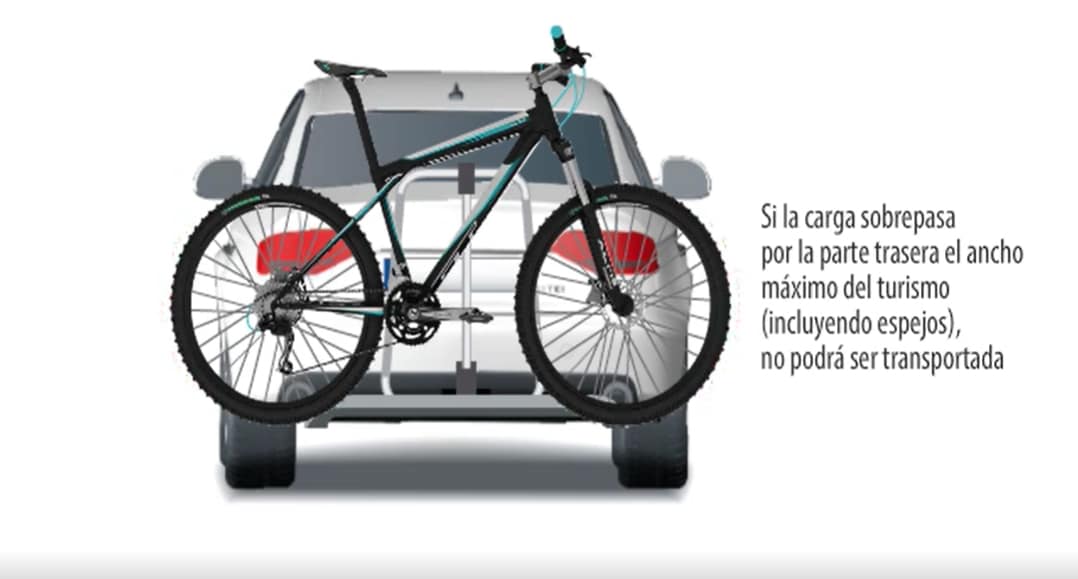
In this case the load can NOT be transported
Driving at night or in poor visibility
The regulations also indicate that driving at night with the load, this must be marked with a red light.
If the bike rack does not have built-in lights, the LED lights that are carried on bicycles could be used.
Is it mandatory to signal a bike rack if it is empty?
Yes, although it is advisable to remove it when not in use.
How to place the V20 sign?
It is important that the sign and the load are securely fastened and that they are also as sheltered as possible from the wind.
It is recommended to use all the anchor points that the sign carries, preferably using elastic tie straps or tensioners, not recommending the use of plastic clamps.
Other points to consider
When placing these signs, the following points must be taken into account.
- They do not have to move dangerously
- They don't have to compromise vehicle stability;
- They do not have to produce noise or dust.
- They do not have to hide lighting devices, plates or manual warnings from drivers
We hope that with these indications you have no doubts about the current regulations to be able to transport bicycles safely.
In any case, we recommend that you visit the DGT website for more information. https://revista.dgt.es/
There are no previous results.















